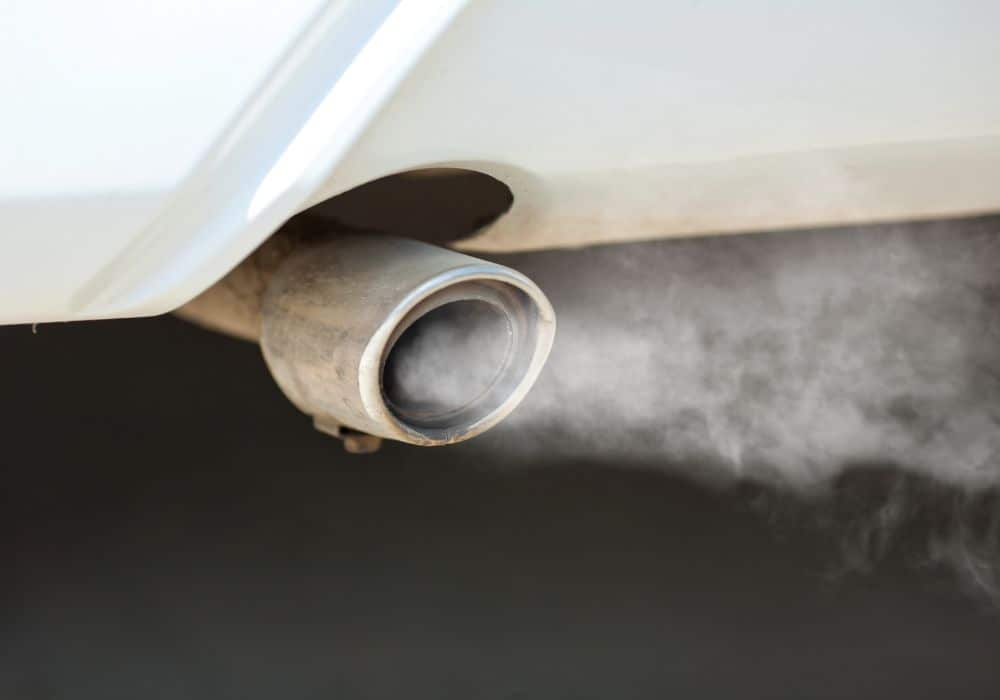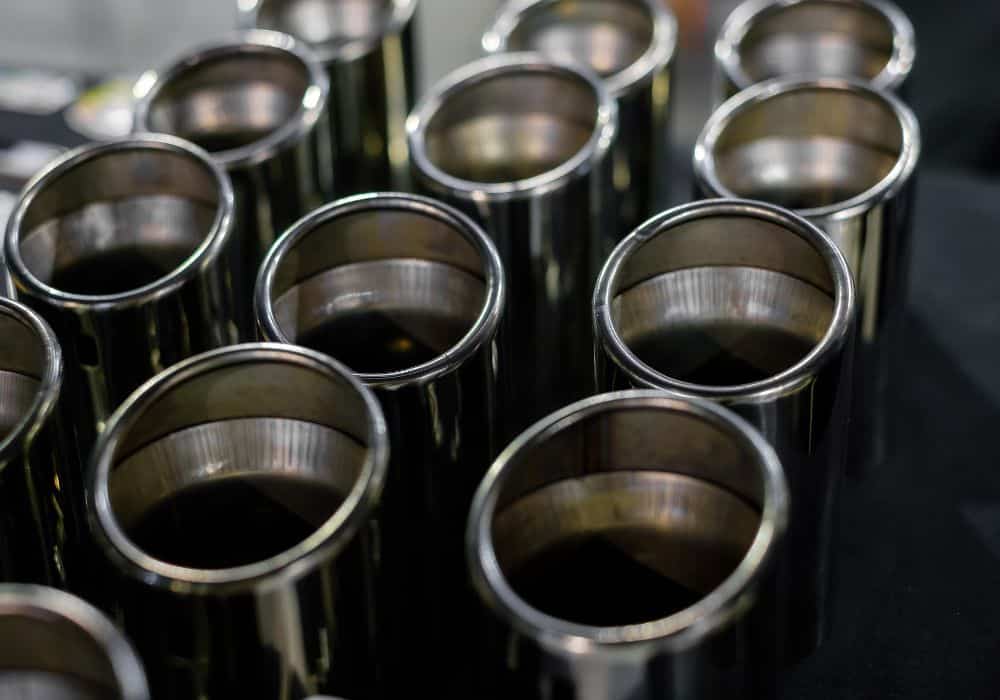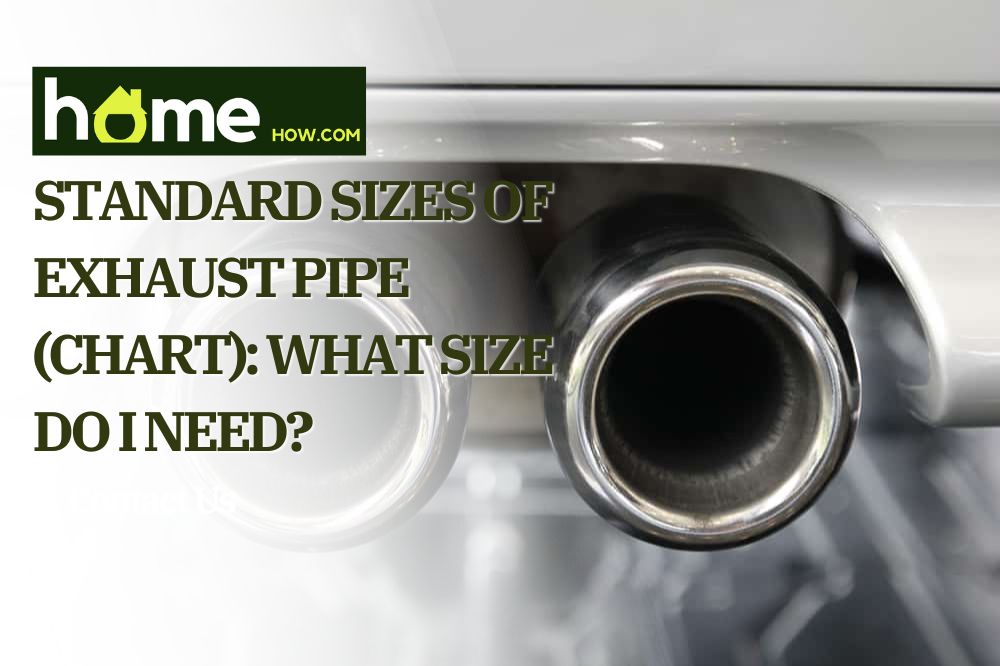There’s so much to get right when customizing your car – from picking the perfect engine and the best set of wheels to designing the interior, the paint job, and more. But one of the most forgotten things to consider is the exhaust pipe.
Many people falsely assume exhaust pipes are all the same. But there is a wide variety to choose from, and the exhaust pipe is crucial to your car’s power. Not only that, it plays a vital role in keeping you safe from exhaust gases throughout your journey.
Today, we’ll explore everything you need to know about picking the correct exhaust pipe size for your car. We’ll explain all the terminology you need, the processes it partakes in, and expert tips on choosing the best type of pipe.
How to calculate the exhaust pipe size?
You must measure several things about your car and the exhaust pipe itself to determine if it is the right fit or not. These include the following:
The Inner and Outer Diameter
The inner diameter (ID) is the distance from edge to edge of the inside space of the exhaust pipe. The outer diameter (OD) measures the outside edges of the pipe.
If your exhaust pipe is a perfect circle:
- Using a tape measure or ruler, measure the distance from the inner edge of the pipe’s one-sided pipe to the opposite side’s inner side.
- If not exact, round up to the next inlet size.
If your exhaust pipe does not have a defined circular shape:
- Wrap it around the tailpipe using a soft ruler or a piece of measured string.
- Place the string against a ruler to find the pipe circumference.
- Find the pipe diameter by dividing the measured number by 3.14 (or pi).
Standard Sizes of an Exhaust Pipe
The size your car needs may be relative to other aspects of your car and engine. There are quite common size references that many mechanics and manufacturers adhere to, which can give you an idea of what size exhaust you may require.
These sizes strike a balance between exhaust-gas velocity and help prevent back pressure from developing in your car’s system. These estimates include the following:
| Engine CID | Single System | Dual Exhaust System | Horsepower (HP) |
| 150-200 | 2” (51mm) 2.25” (57mm) 2.5″ (64mm) |
2″ (51mm)
2″ (51mm) 2″ (51mm) |
100 150 200 |
| 200-250 | 2.25” (57mm) 2.5” (64mm) 2.5″ (64mm) |
2″ (51mm)
2″ (51mm) 2.25″ (57mm) |
150 200 250 |
| 250-300 | 2.25” (57mm) 2.5” (64mm) 3” (76mm) |
2” (51mm) 2.25” (57mm) 2.5” (64mm) |
200 250 300 |
| 300-350 | 3” (76mm) 3” (76mm) 3.5” (90mm) |
2.25” (57mm) 2.5” (64mm) 2.5” (64mm) |
250 300 350 |
| 350-400 | 3” (76mm) 3.5″ (90mm)3.5″ (90mm) |
2.5″ (64mm)
2.5″ (64mm) 2.5″ (64mm) |
300 350 400 |
| 400-450 | 3.5” (90mm) 4″ (101mm)4″ (101mm) |
2.5″ (64mm)
3″ (76mm) 3″ (76mm) |
350 400 450 |
| 450-500 | 4.5″ (115mm)
4.5″ (115mm) 4.5″ (115mm) |
3.5″ (90mm)
3.5″ (90mm) 3.5″ (90mm) |
300 450 500 |
Using this table as a reference, you may be able to find out what type of exhaust you require. E.g., an engine with a 250-300 CID and a horsepower engine of 250-350 requires 3” inch pipes on a single system and 2.25” on a dual system.
Why does proper sizing matter to a custom exhaust system? If the exhaust pipe diameter is too big, it can consume too much of the engine’s torque and horsepower, lowering speed. Too small can choke the engine with fumes.
What about exhaust mass?

Sizing your exhaust pipe by diameter is the easiest, most straightforward way. But there is another alternative, though it does involve considerably more math. Don’t say we didn’t warn you!
You can size your exhaust pipe by working out the conversion of mass by:
“Mass of air that the engine breathes in + mass of fuel = mass of exhaust gasses.”
This equation requires that you multiply the engine displacement by its revolutions per minute (engine RPM). Then, divide the number by 2 (it takes two full rotations for the engine to exhaust the air volume). Then, convert this figure from volume to mass.
What else affects exhaust sizing?
1. Single vs. Double Exhaust System
A single exhaust system simply uses a singular pipe as the exit for gases. They are standard with many factory cars and have some benefits, including being:
- Lightweight
- Lower cost
- Quieter
- Have increased velocity
- Increased fuel economy
- An easier system to replace if broken
A double exhaust system has two exit points. It can push out twice as much exhaust, increasing horsepower and enhancing its sound during the accelerator, and comes in various styles, including turbo and cat-back exhausts.
You must also consider what it connects to help you find the proper-sized exhaust pipe. There are many components to an optimal exhaust system, and you must pick complimenting sizes for each inlet and outlet to have the best exhaust system for your car.
Consider the following mechanisms:
2. Exhaust Manifold
An exhaust manifold collects gases from multiple cylinders of the car engine and channels them all directly to the exhaust pipe. It is often made of heavier metals like cast iron or stainless steel and has standard sizes in production. Exhaust manifolds are the ideal part to use for traditional cars.
Always ensure new factory exhaust manifolds fit your car, especially if you are kitting out an older model.
3. Exhaust Header
An exhaust header is similar to a manifold in its function but differs slightly in its material. Headers are often made of longer, thinner steel, size, and overall power. They also help decrease back pressure. Too much back pressure keeps exhaust fumes in the car longer, hampering performance.
For this reason, exhaust headers are ideal for high-performance cars to include with your exhaust pipe. And if you want your exhaust to add power, a header is a great accessory to have.
4. Exhaust Muffler
Many people think that an exhaust muffler’s only purpose is to dampen and minimize airflow and the noise of your car, but it also helps to reduce toxic emissions. By helping to get rid of exhaust gases, a muffler can help the exhaust pipe and your car to reach its full potential.
5. Downpipe
This tubing directs exhaust gases toward your exhaust system, allowing for better combustion and gas management. They also help increase horsepower, especially with higher-end cars.
What does the size of the exhaust pipe affect?

There are many factors that the exhaust pipe influences around your car, and understanding these will help you appreciate why finding the right-sized pipe is essential. Many of these are things people are still unaware of.
1. Safety
The primary function of the exhaust pipe is to channel toxic fumes away from your car’s engine and safely direct them out of the vehicle. This protects you and also your car’s internal structure.
The bigger the exhaust pipe, the quicker it can expel gasses from your car’s system, improving its overall safety and alleviating pressure from several other car systems.
2. Smoother Performance
Because an exhaust pipe takes out the gases from the car quicker and more effectively, this can free up the engine to become more powerful and ultimately run smoother.
The car’s horsepower depends on how well the exhaust deals with the ignition of air and fuel mixtures and removes fumes in the combustion chamber. But to do this, it needs horsepower, which is directly influenced by the width of your exhaust pipe.
In short, a wider exhaust pipe increases horsepower, providing better fume collection and thus increasing combustion.
3. Velocity and Performance
Velocity is defined as the quickness of motion and is related to acceleration. In terms of an exhaust pipe on the car, the higher the velocity, the better the vehicle can achieve high speeds.
A larger exhaust will allow for quicker acceleration, as gases pass faster and decrease pressure-build up.
4. Scavenging and Power Output
Scavenging in cars is when exhaust gas in an internal combustion engine cylinder is replaced with fresh air, a fuel mixture for the next cycle. If scavenging is hampered, it will lead to reduced power output. For this reason, the length of the exhaust pipe is equally as crucial as its width.
5. Engine Performance
The exhaust pipe also helps improve your engine’s performance. By releasing harsh chemicals from the system, the exhaust replenishes your engine’s cylinders with fresh air and fuel, allowing it to perform at its optimal best. Your car will be able to accelerate quickly and powerfully.
Conclusion
The exhaust pipe is the backbone of the car. It helps it excel in several areas, including proper management of fumes, as well as acceleration and fuel consumption. It’s no surprise that exhaust size matters in helping your car reach its potential, especially if you’re planning modifications.
You may need to replace your pipe with smaller or larger exhaust pipe upgrades by working out the exact size. But as we’ve discovered throughout this article, bigger is not always better.
If you doubt, use the industry standard guidelines from the above table or ask your mechanic’s opinion.
If you still have burning questions about sizing your exhaust pipe, or if you want to share your experiences with car components, please leave a comment below.
But with exhaust pipes and sizes, remember these key points:
- Use size reference guides as a starting point, paying specific attention to inner and outer diameters and lengths.
- You can increase and support exhaust pipe performance through other components, including mufflers, manifolds, and headers.
- Both single and double systems have their benefits and flaws – consider these carefully when choosing an exhaust system.
